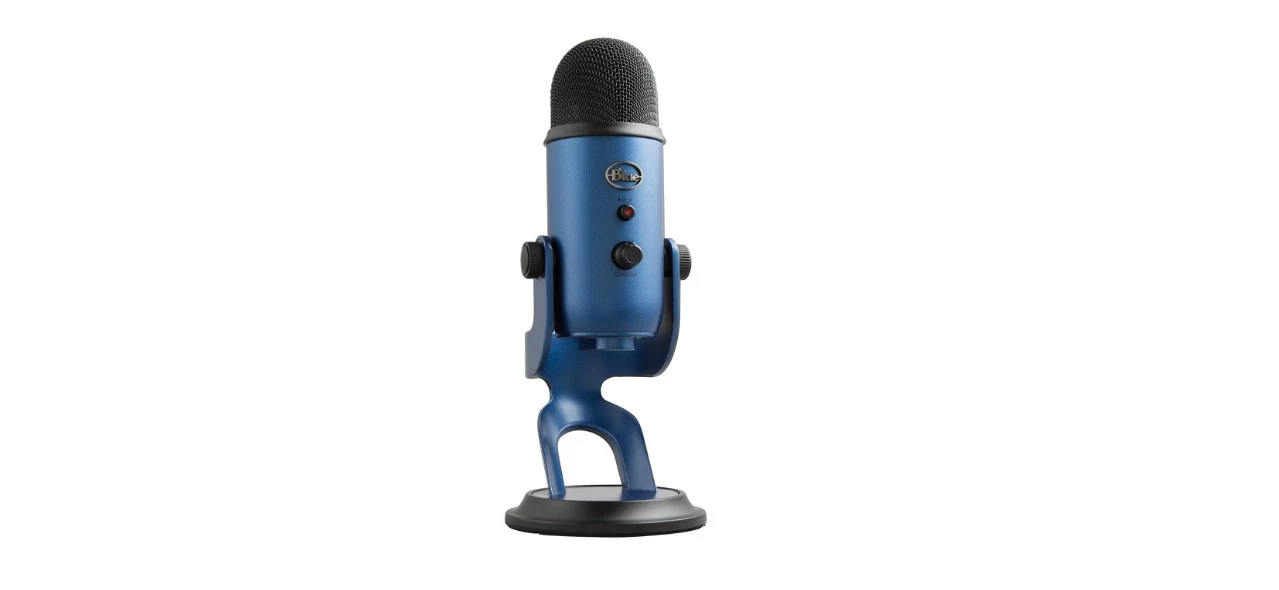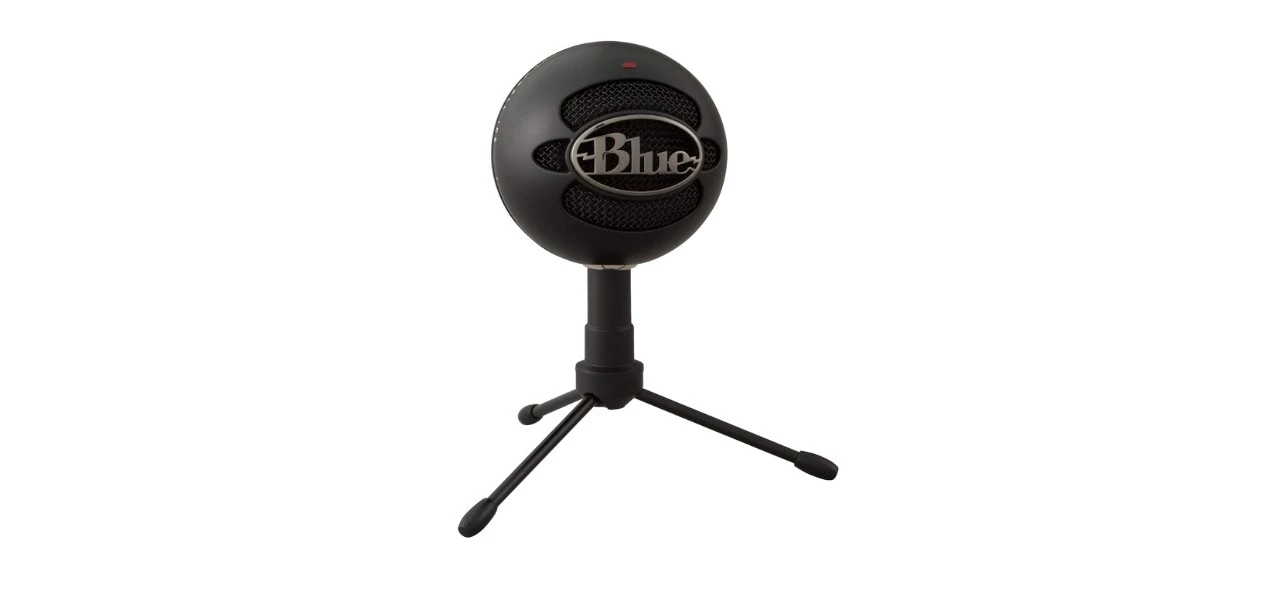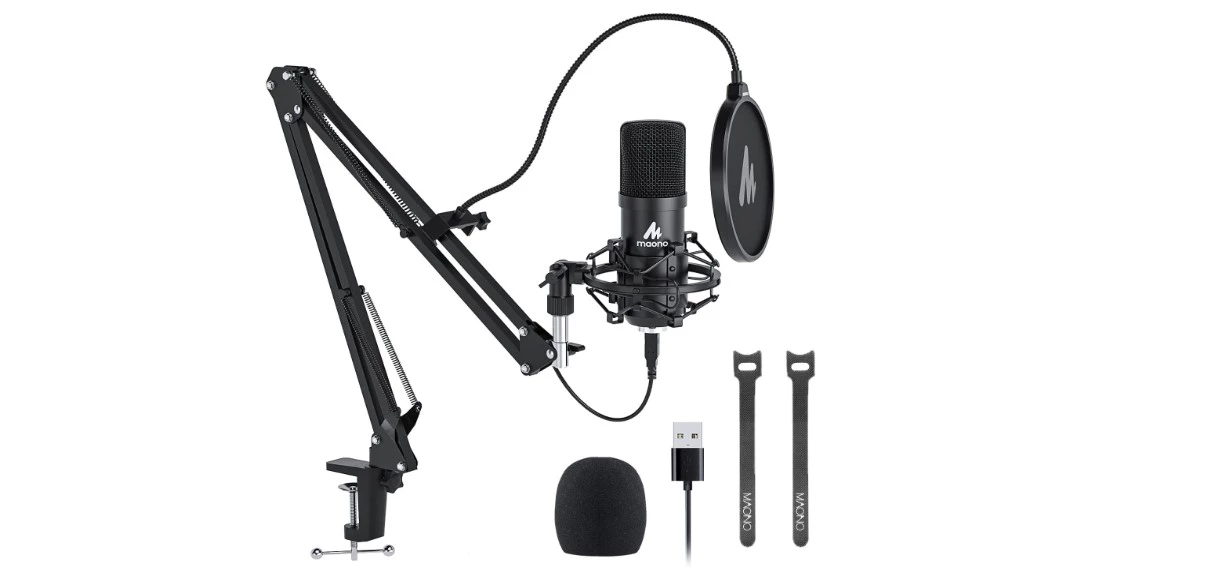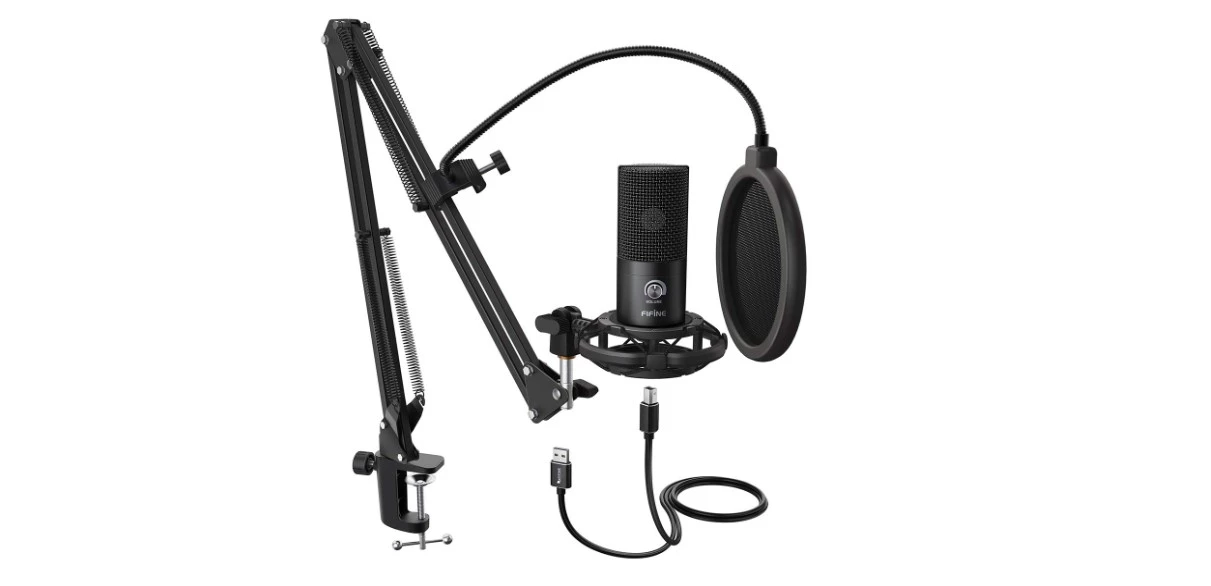The art of music crosses generations, languages, and civilizations. It is healing for the soul and a necessary component of human existence. The technology utilized to make music is one of the most essential components of the process.
Condenser mics have grown in popularity recently in the music business, particularly for vocalists. The way artists record their music is being revolutionized by these technological wonders.
As vocalists, we recognize the unmatched importance of flawless performance. A single note, a poignant line, or a beautiful tune can profoundly impact both the audience and the performer. In this quest for excellence, selecting a microphone becomes an art form in and of itself. Condenser microphones are the preferred equipment of vocalists all over the globe because of their exceptional sensitivity, clarity, and capacity to capture the nuances of the human voice.
Have a decent microphone in your arsenal, regardless of your experience level as a vocalist. Your recordings may not fully convey your talent if you are not using a high-quality condenser microphone.
You must select the one that best suits your needs. In this article, we’ll discuss the top choices on the market and things to consider before you buy.
In this post, we’ll walk you through the process of choosing the best condenser microphone for your particular singing style and tastes. Whether you’re a forceful belter, captivating storyteller, soulful crooner, or experimental vocalist, we’ve searched the market and brought you a carefully selected selection of microphones that suit a wide range of singing styles and price points.
Our investigation revolves around our understanding of condenser microphones. We will explore the physics and technology underlying these amazing gadgets, dispelling the technical speak that frequently surrounds the choice of audio equipment. Whether it’s self-noise ratings, diaphragm kinds, or polar patterns, we’ll provide you with the information you need to make confident decisions.
This blog post will discuss high-rated condenser microphones under 10k as well as things to think about before making a purchase.
What are Condenser Microphones?
Condenser microphones are particular types of mics that turn sounds into electrical signals. They work by using a thin diaphragm close to a plate.
When sound hits the diaphragm, it moves, changing the space between the diaphragm and the plate. This change creates an electric signal.
These microphones are good at capturing a wide range of sounds, like voices and music, in clear detail. They need extra power, called phantom power, to work.
People often use condenser microphones for professional recording because they give really good sound quality.
Types of Condenser Microphones
Condenser microphones come in various types, each designed to suit specific recording needs. Here are the common types of condenser microphones:
Large-Diaphragm Condenser Microphones
Purpose: Ideal for studio recording of vocals, solo instruments, and broadcast applications.
Characteristics: These microphones have a diaphragm with a diameter typically larger than one inch, providing a warm and full sound. They are often preferred for their ability to capture low-frequency details.
Small-Diaphragm Condenser Microphones
Purpose: Suited for capturing detailed sound in acoustic instruments, such as pianos, guitars, and drum overheads.
Characteristics: These microphones have a smaller diaphragm, allowing for more accurate high-frequency reproduction. They are valued for their ability to capture fast transients and provide a more precise representation of the source.
Electret Condenser Microphones
Purpose: Widely used in consumer-grade applications, including camcorders, smartphones, and some entry-level recording scenarios.
Characteristics: Electret condenser microphones use a permanently charged diaphragm, simplifying the design and reducing the need for external power. While they may not match the performance of higher-end condensers, they offer a cost-effective solution for casual recording.
Tube Condenser Microphones
Purpose: Preferred for recording vocals and instruments in a studio setting, adding a warm and vintage character to the sound.
Characteristics: These microphones incorporate vacuum tubes in their circuitry, introducing a pleasing harmonic distortion that imparts a unique coloration to the audio. They are favored for their ability to capture a rich and smooth sound.
Back-Electret Condenser Microphones
Purpose: Common in small diaphragm microphones, suitable for recording various acoustic instruments.
Characteristics: Similar to electret condensers, back-electret microphones have a permanently charged diaphragm. They often have a compact design, making them convenient for use in portable recorders and other compact audio devices.
Multi-Pattern Condenser Microphones
Purpose: Versatile microphones suitable for different recording scenarios, as they can switch between various polar patterns (e.g., cardioid, omnidirectional, figure-eight).
Characteristics: These microphones provide flexibility by allowing users to adjust the directionality of the pickup pattern. This versatility makes them suitable for recording a variety of sound sources in different environments.
Boundary (or PZM) Condenser Microphones
Purpose: Used in conference rooms, stage productions, and situations where a low-profile microphone is needed.
Characteristics: Boundary microphones are designed to be placed on a surface, such as a table or floor. They use the surface to enhance their sensitivity, making them effective in capturing sound in a specific area.
Advantages of using Condenser microphones
Sensitivity and Responsiveness: Condenser microphones are susceptible and responsive to sound, capturing a wide frequency range with great detail and accuracy. This makes them ideal for recording vocals, acoustic instruments, and nuanced sound sources.
Comprehensive Frequency Response: Condenser microphones typically have a broader frequency response compared to dynamic microphones. This allows them to capture both low and high frequencies, resulting in a more natural and faithful reproduction of the recorded audio.
Low Noise Levels: Condenser microphones generally have a lower self-noise compared to dynamic microphones. This means they can capture quieter sounds without introducing a significant amount of unwanted background noise.
Transient Response: Condenser microphones excel in capturing fast transients, which is crucial for accurately reproducing the attack and decay of musical instruments. This makes them suitable for recording a wide range of instruments, including percussion and strung instruments.
High Sensitivity to Low-Level Sounds: Condenser microphones are capable of capturing low-level audio signals with clarity. This makes them suitable for capturing subtle details in vocals, acoustic instruments, and ambient recordings.
Versatility: Condenser microphones come in various shapes and sizes, including large-diaphragm and small-diaphragm designs. This versatility makes them suitable for a wide range of recording applications, from studio vocals to field recording.
Accuracy and Transparency: Condenser microphones are known for their accuracy in reproducing sound, providing a transparent and uncolored representation of the audio source. This is particularly important in situations where the goal is to capture the true character of the sound without introducing coloration.
Low Output Impedance: Condenser microphones typically have a low output impedance, allowing them to drive long cable runs without significant signal degradation. This is beneficial in studio setups where microphones may be located some distance from the recording equipment.
Phantom Power: Many condenser microphones require phantom power (usually 48 volts) to operate. While this may be seen as an additional requirement, it allows the microphone to have an active electronic circuit, contributing to its sensitivity and overall performance.
5 Best Condenser Microphones for Singing
Audio-Technica AT2020

The Audio-Technica AT2020 is part of the AT20 series, which is noted for its excellent audio quality and low price. This cardioid condenser microphone is a flexible and dependable instrument for a wide range of audio recording applications. The AT2020 is designed to offer professional-grade sound capture in a compact and user-friendly device, whether you’re a seasoned musician, a podcast fan, or a content developer.
The AT2020 is a condenser microphone widely regarded for its accuracy and sensitivity. It is particularly well-suited for capturing vocals and instruments with unmatched clarity.
It is a genuine tribute to Audio-Technica’s commitment to providing professional-grade audio equipment with excellent sound quality that is accessible to both amateurs and seasoned pros.
Key features
- Transducer Type
- Unidirectional Polar Pattern
- Maximum SPL
- Noise Reduction
Pricing: INR 8241
Blue Yeti

The Blue Yeti USB microphone is an iconic and well-respected piece of audio gear that has had a huge influence in the worlds of content production, podcasting, gaming, and professional audio recording. The Blue Yeti is a microphone that has earned its place as a top choice for producers and audio fans due to its amazing adaptability, sound quality, and user-friendly design.
The Blue Yeti has made high-quality audio recording more accessible. Because of its plug-and-play architecture and user-friendly settings, even newcomers to audio recording can produce professional-quality results.
This ease of access has enabled innumerable content makers, podcasters, and gamers to create compelling material without a complicated audio setup.
Key Features
- Plug and Play
- Volume Control Button
- No-latency Monitoring
Pricing: INR 8994
Blue Snowball iCE

The Blue Snowball iCE condenser microphone is a popular and cost-effective option for a variety of audio recording applications. The Snowball iCE has a reputation for delivering excellent sound quality in a user-friendly and affordable package, whether you’re a beginner looking to start your podcast, a gamer looking to improve their voice chat quality, or a content creator in need of crisp and clear audio for videos.
This condenser microphone is part of Blue’s acclaimed Snowball line, which is noted for its dependability and audio quality. In this complete review, we will introduce the Blue Snowball iCE microphone and thoroughly examine its essential features, emphasizing how it may improve your audio recording experience.
Key Features
- Plug-and-Play Simplicity
- High Quality condenser Capsule
- Blue Sherpa Software
- Cardioid Polar Pattern
Pricing: INR 4994
Maono AU-A04

The Maono AU-A04 condenser microphone is a highly appreciated and adaptable audio recording equipment that has gained popularity due to its remarkable performance and low cost. The Maono AU-A04 is a compelling solution for musicians, podcasters, content creators, and anybody wanting to improve their audio quality for video conferencing and online meetings.
The Maono AU-A04 condenser microphone is part of the brand’s expanding audio equipment offering. Maono is recognized for creating high-quality, low-cost microphones and accessories that meet a wide range of audio recording requirements. The AU-A04 microphone, in particular, stands out as a flexible and dependable instrument built to capture clean and professional-grade sound in a variety of recording scenarios.
Key Features
- USB Plug-and-play Connectivity
- Wide Frequency Response
- Headphone Monitoring
- Mute Button
Pricing: INR 3699
Fifine T669

The Fifine T669 condenser microphone is a prominent product in the Fifine microphone family, which is noted for providing dependable and affordable audio recording options. Whether you’re a seasoned musician, podcast fan, gaming content developer, or someone trying to improve audio quality for video conferencing and online meetings, the T669 provides professional-grade sound capture without breaking the budget.
This microphone has grown in popularity due to its capacity to offer crisp, clear sounds in a range of recording situations. Its flexibility, user-friendliness, and low price have made it a popular choice for anyone looking for a great recording experience.
Key Features
- Plug-and-Play
- Unidirectional Polar Pattern
- Excellent Quality
Pricing: INR 3190
FAQs
What is a condenser microphone, and why is it recommended for singing?
Condenser microphones are susceptible, making them perfect for recording the subtleties of a singer’s voice. They are noted for their clarity and detail, which is essential for recording vocals.
Are USB condenser microphones suitable for singing, or should I opt for XLR microphones?
USB condenser mics are ideal for beginners and home recording. XLR microphones provide higher quality but require extra equipment, such as audio interfaces.
Can I use a condenser microphone to record both singing and musical instruments?
Yes, many condenser mics are adaptable and appropriate for recording voices and a wide range of musical instruments, making them affordable options for multi-purpose use.
Do I need a shock mount for my condenser microphone when recording vocals?
Although a shock mount is not always required, it can help decrease vibrations and handle noise. This feature is useful if you want the clearest recordings possible.
Can I use a condenser microphone for singing if I have a limited budget?
Yes, there are budget-friendly condenser microphones that offer good quality for vocal recording. Consider options like the Audio-Technica AT2020.
Conclusion
Condenser microphones, like the Blue Snowball iCE and Audio-Technica AT2020, are crucial for musicians and singers. They capture the most minor details of performances, making recordings sound top-notch.
When picking one, think about features like sensitivity and setup ease. These mics vary in cost, suiting both beginners and pros. Your choice depends on your budget, where you’ll record, and your mic preferences.
Whether it’s the simple Audio-Technica AT2020 or the versatile Blue Yeti, the right condenser mic enhances your voice, making your singing stand out.
Explore options, try different mics, and find the one that fits your style for a lasting impression on your audience.
